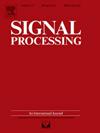Enhancing jamming source tracking capability via adaptive grey wolf optimization mechanism for passive radar network
IF 3.4
2区 工程技术
Q2 ENGINEERING, ELECTRICAL & ELECTRONIC
引用次数: 0
Abstract
In a complex electromagnetic environment, the tracking of jamming source by passive radar network is of great significance for enhancing anti-jamming capability, military combat safety, and strategic decision-making. However, traditional jamming source tracking algorithms suffer from low tracking accuracy and convergence speed, primarily due to the high nonlinearity and the unknown noise characteristics of the passive radar system. In order to improve the capability of jamming source tracking for passive radar network, a maximum correntropy cubature Kalman filter based on improved grey wolf optimization algorithm is proposed. Firstly, the grey wolf optimization mechanism improved by Gaussian random walk and Gaussian mutation strategies is proposed to accurately estimate the characteristics of unknown process and measurement noise, providing more accurate model parameters for the cubature Kalman filter algorithm. Then, an adaptive maximum correntropy criterion is designed, which optimizes the filter gain by adaptively adjusting the kernel size to suppress the influence of outliers on the filtering estimation and enhances the robustness of the algorithm. Finally, experiment of jamming source tracking indicates that the proposed algorithm significantly outperforms traditional algorithms in terms of tracking accuracy and convergence speed under diverse unknown noise environments.
利用自适应灰狼优化机制增强无源雷达网络干扰源跟踪能力
在复杂电磁环境下,无源雷达网络对干扰源的跟踪对提高抗干扰能力、军事作战安全和战略决策具有重要意义。然而,传统的干扰源跟踪算法存在跟踪精度低、收敛速度慢的问题,其主要原因是无源雷达系统的高非线性和未知噪声特性。为了提高无源雷达网络对干扰源的跟踪能力,提出了一种基于改进灰狼优化算法的最大熵稳态卡尔曼滤波器。首先,提出了由高斯随机漫步和高斯突变策略改进的灰狼优化机制,以准确估计未知过程和测量噪声的特征,为cubature Kalman滤波算法提供更准确的模型参数;然后,设计了自适应最大熵准则,通过自适应调整核大小来优化滤波增益,抑制离群值对滤波估计的影响,增强算法的鲁棒性。最后,干扰源跟踪实验表明,该算法在不同未知噪声环境下的跟踪精度和收敛速度都明显优于传统算法。
本文章由计算机程序翻译,如有差异,请以英文原文为准。
求助全文
约1分钟内获得全文
求助全文
来源期刊

Signal Processing
工程技术-工程:电子与电气
CiteScore
9.20
自引率
9.10%
发文量
309
审稿时长
41 days
期刊介绍:
Signal Processing incorporates all aspects of the theory and practice of signal processing. It features original research work, tutorial and review articles, and accounts of practical developments. It is intended for a rapid dissemination of knowledge and experience to engineers and scientists working in the research, development or practical application of signal processing.
Subject areas covered by the journal include: Signal Theory; Stochastic Processes; Detection and Estimation; Spectral Analysis; Filtering; Signal Processing Systems; Software Developments; Image Processing; Pattern Recognition; Optical Signal Processing; Digital Signal Processing; Multi-dimensional Signal Processing; Communication Signal Processing; Biomedical Signal Processing; Geophysical and Astrophysical Signal Processing; Earth Resources Signal Processing; Acoustic and Vibration Signal Processing; Data Processing; Remote Sensing; Signal Processing Technology; Radar Signal Processing; Sonar Signal Processing; Industrial Applications; New Applications.
 求助内容:
求助内容: 应助结果提醒方式:
应助结果提醒方式:


